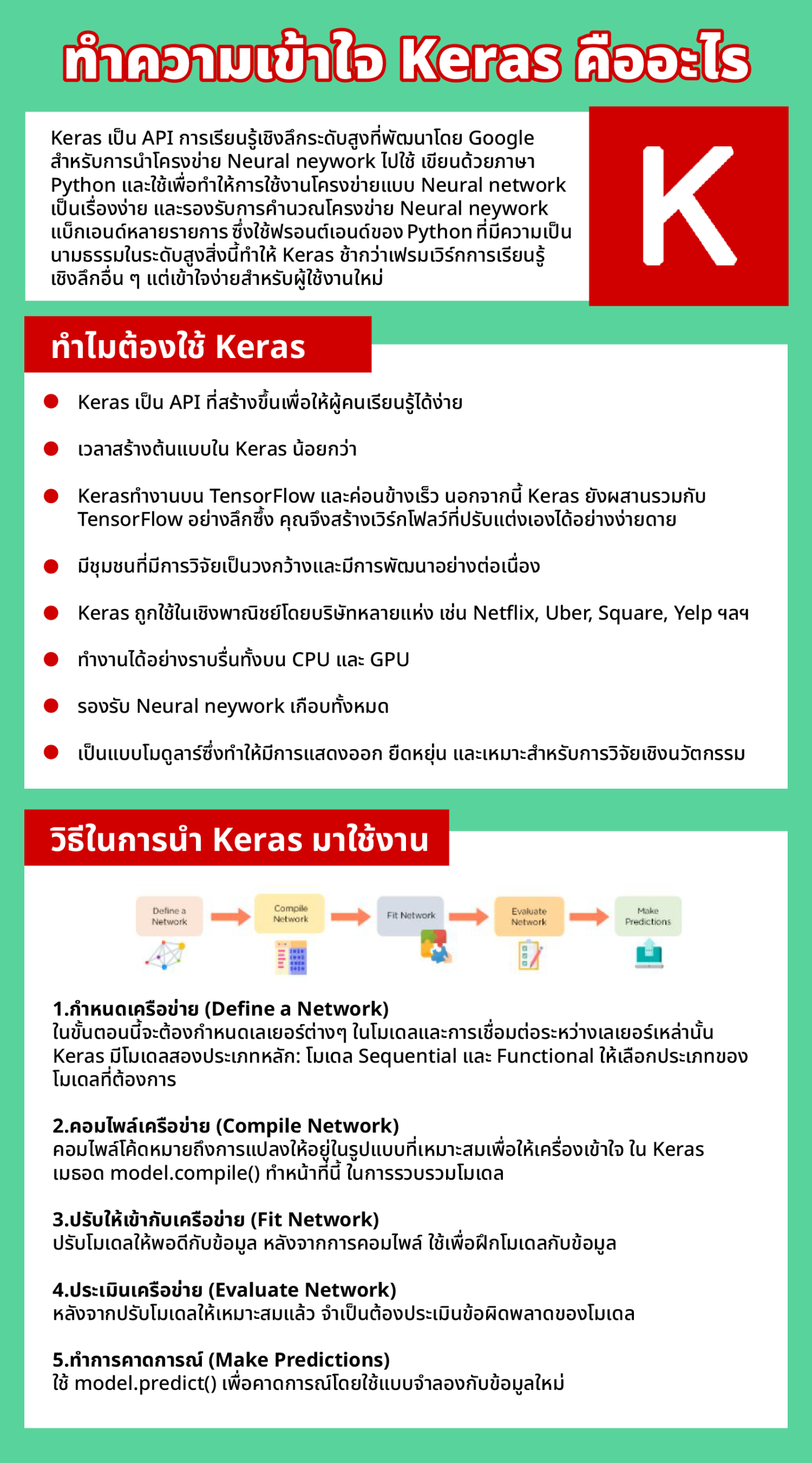
Understanding what Keras is
2024-04-11 02:52:53

In creating or developing complex artificial intelligence, various models are used, one of which is Machine Learning (ML) models that work with Deep learning (DL) that work with Neural networks. or the working of the nervous system structure so that artificial intelligence can learn and process
So what is Keras?
Keras is a high-level deep learning API developed by Google for implementing neural network networks. It is written in Python and is used to make it easy to use neural network networks and supports back-end neural network calculations. Many items It uses a Python frontend with a high level of abstraction. This makes Keras slower than other deep learning frameworks but easy to understand for new users.
Keras can help you switch between different backends. There are five supported frameworks: TensorFlow, Theano, PlaidML, MXNet, and CNTK (Microsoft Cognitive Toolkit). Out of these five frameworks, TensorFlow has officially adopted Keras as a high-level API. Keras is embedded in TensorFlow and can be used to perform deep learning operations quickly.
Why use Keras?
-Keras is an API created to make it easy for people to learn.
-Prototyping time in Keras is less.
-Keras runs on TensorFlow and is relatively fast. Additionally, Keras is deeply integrated with TensorFlow, so you can easily create customized workflows.
-There is a community that has extensive research and continuous development.
-Keras is used commercially by many companies such as Netflix, Uber, Square, Yelp, etc.
- Runs smoothly on both CPU and GPU.
-Supports almost all Neural networks.
-It is modular which makes it expressive, flexible, and ideal for innovative research.
How to use Keras
1. Define a Network
In this step, the layers must be defined. In the models and connections between those layers, Keras provides two main types of models: Sequential and Functional models. Choose the type of model you want.
2. Compile Network
Compiling code means transforming it into a suitable format for the machine to understand. In Keras, the model. compile() method does this, to compile a model.
3. Adapt to the network (Fit Network)
Fit the model to the data. After compilation Used to train models on data.
4. Evaluate Network
After adjusting the model appropriately It is necessary to estimate the model error.
5. Make Predictions
Use model. predict() to make predictions using a model on new data.
Leave a comment :
Recent post

2025-01-10 10:12:01

2024-05-31 03:06:49

2024-05-28 03:09:25
Tagscloud
Other interesting articles
There are many other interesting articles, try selecting them from below.

2025-03-05 04:31:19

2024-08-26 10:06:54

2024-08-13 11:35:08

2024-02-27 04:53:47

2024-05-02 05:54:22

2023-10-06 01:14:11

2025-03-19 01:53:23

2025-03-13 11:08:24

